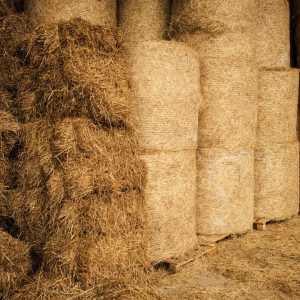 Storing Your Hay Properly For Winter: Winter is just around the corner, and for many of us, that means it’s time to start thinking about hay storage. Hay is an essential part of your animal’s diet. It’s important to make sure that the hay you store for the winter is of good quality and properly stored. We’ve compiled some tips on storing your hay to ensure it stays dry and fresh throughout the winter.
Storing Your Hay Properly For Winter: Winter is just around the corner, and for many of us, that means it’s time to start thinking about hay storage. Hay is an essential part of your animal’s diet. It’s important to make sure that the hay you store for the winter is of good quality and properly stored. We’ve compiled some tips on storing your hay to ensure it stays dry and fresh throughout the winter.
Choosing a Location
The first step in storing your hay is finding the right location. Ideally, you want a dry, well-ventilated area that’s protected from the elements. If you don’t have a barn, you may need to consider building a hay storage structure. For example, a pole barn or a hay shed. When choosing a location, make sure it’s easy to access with your equipment. In addition, be sure it’s away from any fire hazards.
Preparing Your Storage Area
Once you’ve found the perfect location, it’s time to prepare your storage area. The floor should be level and compacted to prevent moisture from seeping into the hay. If you don’t have a solid floor, consider laying down pallets or gravel to create a stable base. Make sure the walls and roof of your storage area are in good repair, and that there are no leaks that could allow moisture to get inside.
Proper Stacking Techniques
It’s important to stack your hay properly to ensure good air circulation and prevent mold and spoilage. Stack bales across the width of the storage area, leaving gaps between each layer for airflow. Make sure the stacks are stable, and that there are no leaning bales or gaps that could cause the stack to collapse. If you’re storing large round bales, store them on end to prevent flattening.
Using a Hay Cover or Tarp
Even if your storage area is well-ventilated and protected from the elements, it’s still a good idea to invest in a hay cover or tarp. A good quality hay cover will protect your hay from moisture, sunlight, and dust, ensuring that it stays fresh for longer. Make sure to choose a cover that’s the right size for your bales, and that it’s made of a breathable material to prevent sweating.
Monitoring Your Hay
Once your hay is stored, it’s important to monitor it regularly throughout the winter. Check for signs of mold, dampness, or heating, and make sure that the stacks are still stable. If you notice any problems, move the affected bales to a different location, and make sure to adjust your storage area or techniques for next year.
Storing your hay properly is essential to the health and wellbeing of your animals. So, it’s worth taking the time to do it right. By utilizing these tips, you can ensure that your hay stays dry and fresh for your animals to enjoy. Be prepared for the upcoming winter months, and visit us for any hay storage supplies you may need.
